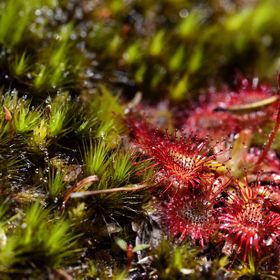

YaniDubin
FollowFlower is Acquilegia - also known variously as Columbine, or Grandmother's Bonnet.
Flower is Acquilegia - also known variously as Columbine, or Grandmother's Bonnet.
Read less
Read less
Views
1016
Likes
Awards
Action Award
People's Choice in Focus Photo Challenge
Superb Composition
Peer Award
Outstanding Creativity
Top Choice
Absolute Masterpiece
Love it
Magnificent Capture
All Star
Top Ranks
Categories
Same photographer See allBehind The Lens
Discover more photos See all
Behind The Lens
Location
The Iris Garden in Motukarara near Christchurch, New Zealand. I had just got my first macro lens a month or two prior, was very much still learning the ropes, and so was very happy to nail this shot. I believe it is still my best show even after 5 more months of practice/learning. The venue is now closed, sadly, due to the death of a proprietor - I was just glad they decided to open for one final season, and so I was making the most of it and driving out every weekend.Time
15:46:11 on October 24th 2015. Being in New Zealand, this was in the spring.Lighting
I had full spring sunlight in this shot, which is why it was shot at ISO100 and f/16 but is still properly exposed. So while I was using about as narrow an aperture as I dare on this lens (due to diffraction), being a macro lens the DoF is still very narrow and evident, and presumably what helped me win this challenge entitled 'Focus'.Equipment
Nikon D7000 with SB700 flash mounted (TTL, EV -1) and Tokina 100mm f/2.8 macro lens. Shot handheld with flash, full manual mode, shutter speed 1/320s (I could have gotten away with slower, but I was actually trying to photograph bees in flight as well, which means this was on the slow side) and aperture f/16.Inspiration
I absolutely adore bees, had been struggling with taking pleasing bee photos for some years, and finally investigated getting a macro lens a month or so earlier. I took it for a test drive, handed over the money, and have never looked back. It is the tool I have needed to express what I love about bees (and other insects) and flowers, but was not able to do so previously. So I was learning to use this new gear, making the most of the final weeks of this fabulous venue, and getting as many bee/flower shots in this cottage garden as I could.Editing
While I do, in general, this shot came out so perfectly (to my eyes), I applied only a hint of unsharp around the focal area to help exaggerate / draw the eye to it. This is simply the camera JPEG - I am not advanced enough for RAW processing as of yet. I use freely available open-source software for all my editing (not owning any Adobe products). This was processed in the GIMP.In my camera bag
My D7000, SB700 and Tokina 100mm f/2.8 macro as used in this shot have been my most heavily used since I started getting into photography late 2015. As I love nature, I also got a Sigma 150-600mm f/5.6-6.3 telephoto lens, and this has greatly improved my bird photos (but boy is it heavy - will take some getting used to!). I have also recently purchased a Tokina 12-28mm f/4 for the occasional landscape. I still pack my Nikon 50mm f/1.8 and Nikon 18-200mm general purpose zoom (older lens from casual photography days) but find I very rarely use them.Feedback
Mostly I got lucky, so I will explain what I was typically doing wrong (and why this shot went right) in case this helps anyone else first starting out in macro (as I was at the time). I was using full manual mode (so the camera was not helping by adjusting aperture/shutter), and as I also used low ISO (needlessly concerned about noise) and narrow aperture (for the high DoF), often my meter was reading down in the negative, but through use of a flash I still got many okay images - but with more contrast/dark areas, rather than the nice bright/dreamy backgrounds which are so pleasing with macro shots. I was relying on my flash too much to illuminate the scene, not just to freeze the action for macro insects. This shot, I think I just had a really bright bit of sun in the scene as f/16 ISO100 does not provide much light. The image was properly exposed due to full spring sunshine. So, above all, if you want to take impressive bee/insect photos close up, I cannot emphasize enough the importance of a macro lens. If, like me, you like to photograph insects in flight, a flash is indispensable.












































